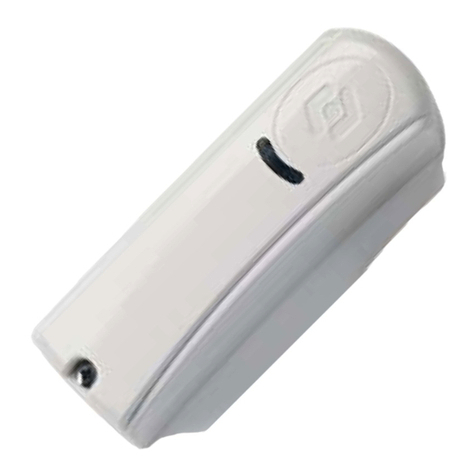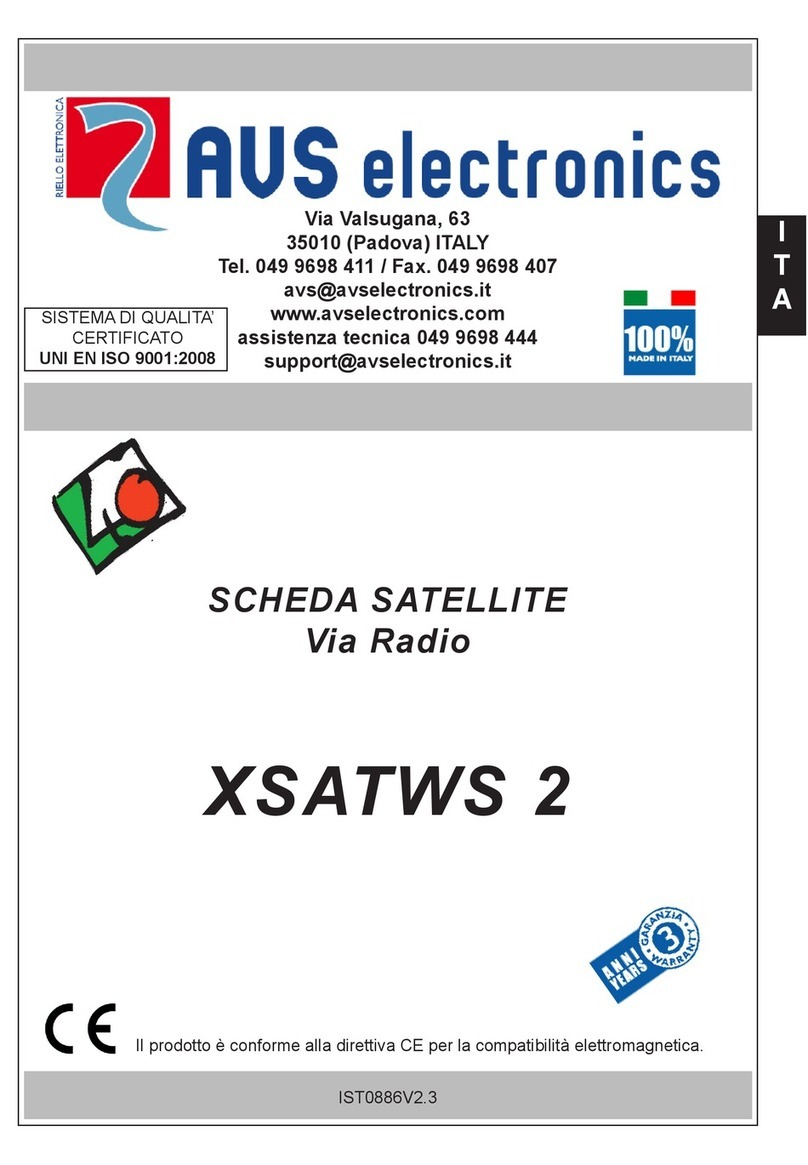
- 3 -
MORSETTI
+Positivo di alimentazione
DA - DB Porta per il collegamento in seriale su RS485
-Negativo di alimentazione
T1 Gestisce l’ingresso abbinato alla zona 7 e/o l’open collector abbinato all’uscita O.C. 7
T2 Gestisce l’ingresso abbinato alla zona 8 e/o l’open collector abbinato all’uscita O.C. 8
TIngresso di antimanomissione (TAMPER) bilanciato con riferimento a negativo.
-Negativo
JUMPER S1
1 - 2
2 - 3
APERTO
Pulsante TAMPER: DISABILITATO - ingresso T: DISABILITATO (LASCIARE LIBERO)
Pulsante TAMPER: ABILITATO - ingresso T: DISABILITATO (LASCIARE LIBERO)
Pulsante TAMPER: ABILITATO - ingresso T: ABILITATO
DIP SWITCH
SAT1 SAT2 SAT3 SAT4 SAT5 SAT6 SAT7 SAT8 SAT9 SAT10 SAT11 SAT12 SAT13 SAT14 SAT15 SAT16
DIP 1 Off On Off On Off On Off On Off On Off On Off On Off On
DIP 2 Off Off On On Off Off On On Off Off On On Off Off On On
DIP 3 Off Off Off Off On On On On Off Off Off Off On On On On
DIP 4 Off Off Off Off Off Off Off Off On On On On On On On On
DIP 5
DIP 6 Non usati
DIP 7 Off Disabilita la gestione degli ingressi abbinati alla zona 7 e zona 8
On Abilita la gestione degli ingressi abbinati alla zona 7 e zona 8
DIP 8 Non usato
LED MULTICOLORE
LED BIANCO Si accende quando l’antenna A è in ricezione
LED VERDE Si accende quando l’antenna B è in ricezione
LED ROSSO Si accende quando è in trasmissione
PROGRAMMAZIONE SENSORI SE ABBINATI A CENTRALI XTREAM
Parametro 1
Accelerometro attivo: impostando a “SI” si abilita la segnalazione dello strappo e del disorientamento del sensore radio come TAMPER.
Parametro 2 Basso consumo: impostando a “SI” si attiva il “Basso consumo” della batteria del sensore radio
Parametro 3 Sensibiltà Antimask: è possibile regolare la sensibilità dell’Antimask presente nel sensore impostando 4 - 100 % (Massimo) o
3- 75 % o 2- 50 %. Impostando a 1 - OFF l’Antimask risulta non attivo
Parametro 4 IR sensibilità ridotta: impostando a “SI” si attiva una riduzione della sensibilità dell’Infrarosso
Parametro 5 IR Semionda: impostando a “Doppio impulso” si attiva un’ulteriore riduzione della sensibilità dell’infrarosso
Parametro 6 Sensibilità microonda: è possibile regolare la sensibilità della Microonda presente nel sensore impostando 1 - 100 % (Mas-
simo) o 2 - 75 % o 3 - 50 % o 4 - 25 %.
Parametro 7 Abilita Morsetto IN1: nel sensore radio WIC 4 / WIC 4 Plus, impostando a “SI” si attiva il funzionamento dell’ingresso a morsetto IN1
NOTA: Nel caso di doppio canale, la congurazione di entrambi i sensori va fatta esclusivamente su quello con l’indirizzo più basso
Parametro 8 Impulsi inerziale / Switch Alarm: nel sensore radio WIC 4 / WIC 4 Plus, è possibile regolare il numero di impulsi per l’allarme
dell’ingresso IN1. 1 = Molto sensibile - 16 = Poco sensibile
Parametro 9 Abilita vibrazione: nel sensore radio WIC 4 Plus, impostando a “SI” si attiva la funzione “Vibrazione” dell’Accelerometro integrato.
Parametro 10 Sensibilità vibrazione Accelerometro: nel sensore radio WIC 4 Plus, è possibile regolare la sensibilità dell’Accelerometro
presente nel sensore. 1 = Molto sensibile - 8 = Poco sensibile
Parametro 11 Numero impulsi vibrazione: nel sensore radio WIC 4 Plus, è possibile regolare il numero degli impulsi dell’Accelerometro
presente nel sensore. 1 = Molto sensibile - 16 = Poco sensibile
PROGRAMMAZIONE SIRENA RADIO SE ABBINATA A CENTRALI XTREAM
Parametro 1
Accelerometro attivo: impostando a “SI” si abilita la segnalazione dello strappo e del disorientamento della sirena radio come TAMPER.
Parametro 2
Durata massima suono: un minuto / tre minuti
Parametro 3
Livello sonoro: è possibile selezionare tra 8 livelli sonori disponibili. 1è il Massimo e 8è il Minimo.
Parametro 4
Tono suono principale: è possibile selezionare una delle 8 tonalità a disposizione
Parametro 5
Tipo alimentazione: selezionare il tipo di alimentazione fornito alla sirena fra 1 - Batteria 6V o 2 - Alimentazione 12V +
Batteria tampone
Parametro 6
Tamper attiva sirena: impostando a “NO”, in caso di apertura del tamper/antistrappo la sirena esegue la trasmissione dell’evento
e suona in base alla programmazione della centrale abbinata
impostando a “SI”, in caso di apertura del tamper/antistrappo, la sirena esegue la trasmissione dell’evento e suona autonomamente
per il tempo impostato “Durata max. suono” o in base ai comandi inviati dalla centrale abbinata.
Parametro 7
Flash acceso/spento: abilita il ash della sirena a visualizzare con un lampeggio l’acceso/spentodella centrale; Acceso: accen-
sione continua per qualche secondo-Spento: tre lampeggi consecutivi
Parametro 8
Abilita vibrazione: (solo con “Accelerom. attivo”= SI ) impostando a “SI” si attiva la funzione “Vibrazione” dell’Accelerometro integrato.
Parametro 9 Sensibilità vibrazione Accelerometro: è possibile regolare la sensibilità dell’Accelerometro presente nella sirena. 1 = Molto sensi-
bile - 8 = Poco sensibile
.
Parametro 10
Numero impulsi vibrazione: è possibile regolare il numero degli impulsi dell’Accelerometro presente nella sirena. 1 = Molto
sensibile - 16 = Poco sensibile





























